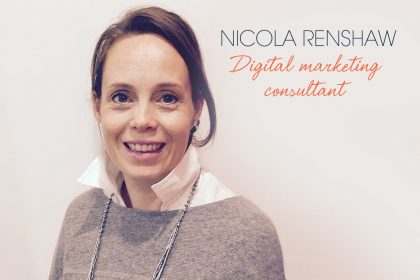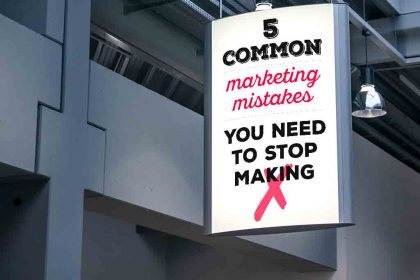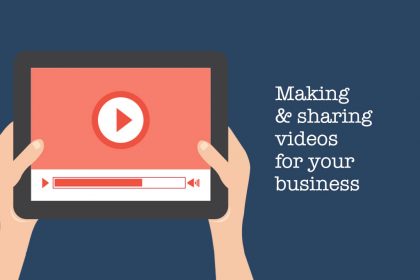Who is your ideal customer? The questions you need to ask to create your avatar
If you don’t have avatars for your business, you risk wasting money on your marketing. Find out what questions you need to ask to identify your ideal customer.
How well do you know your customers? Do you know what breakfast cereal they like? Where they go on holiday? What keeps them up at night?
As crazy (and possibly irrelevant) as these examples may seem, Nicole Martin from Pinpoint Marketing Consultancy explains why you need to find out as much as possible about your ideal customers to create marketing with real impact.
Who is your ideal customer?
While many people may buy from you occasionally, there will be a group of people, or type of person who will come back to you again and again, and spend more money with you. This group is known as your segment or target audience. And the distillation of these people into a single person is known as your avatar or persona – your ideal customer.
Determining your ideal customer is step three in the marketing plan process, and it’s a key one. If you don’t know who you are talking to or aiming at, then your marketing message will be wrong, and get missed by the right people.
Too often, when I ask new clients who they are want to target for their marketing campaign, they’ll answer “everyone”. But this is never correct.
Let’s take coffee as an example. If you sell coffee, then most people in theory may drink it. But not all of these people are your customers, and not all of them will be your ideal customer.
- Some will drink coffee every day, others only occasionally.
- Some will be happy with the cheapest instant coffee, others will choose expensive beans to grind at home.
- Some will only drink coffee at home, while others will only drink it while they’re out.
- Some will only buy takeaway coffee, others will prefer to sit and drink their coffee at leisure.
There will also be vastly different people in the spectrum of coffee drinkers, from teenagers who’ll respond to challenging, youth-focused messaging, to older people who’ll prefer more traditional campaigns. And spending power; some may love expensive coffee but have an instant coffee budget.
So you see, while ‘everyone’ may drink coffee, there’s a huge range of differences to when, what, how and why they do. And no single marketing campaign can talk to all of them.
Narrow down your audience to talk to more customers
By narrowing down your audience, you can ensure that your marketing is tailored perfectly to the people who will actually buy and love your products or services – and enable you to reach more of them.
And you may not just have one ideal customer. Let’s take the coffee example above. You may import high quality beans from South America and sell via your website. And you may have two ideal customers:
- A young professional who is living alone or with their partner.
- A middle aged, well-travelled couple.
It’s fine to have more than one target audience. You can then plan general marketing messages, as well as separate campaigns that speak precisely to your individual avatars.
Who is your ideal customer?
So how do you identify your ideal customer or avatar? I recommend arming yourself with a big pad of paper or a notebook and start asking yourself some questions.
To get started, look at your past sales and enquiries and see what you can learn from them:
- Who and where are they from?
- Are they mostly women or men, or evenly mixed?
- How old are they?
- What’s their marital status?
- Do they have children?
- Are they based in the same geographical location?
- Are they in the same socio-economic groups?
- Are they of a certain affluence/disposable income?
- What are their hobbies?
Another major differentiator to consider when marketing to your defined audience is will it be business to business (B2C) or business-to-consumer (B2B)?
What’s their personality like?
The more ‘real’ you can make your customers, the more you’ll feel like you know them properly. And the better you know them, the easier you’ll find it to create marketing that appeals to them. So also consider these questions:
- Are they religious or spiritual?
- What are their personal goals?
- What are their key personality traits? (Such as anxious, caring, determined, successful, happy, loyal, good listener, willing and trustworthy.)
- What behaviour traits do they have?
- What brands do they like and websites they look at?
- Are they on social media?
What is their typical day?
Think about your ideal customer’s typical day. What do they do? For example, they may get up, eat breakfast, do the school run then work. Eat lunch if they have time, work again, do the school run then return home. Prepare and eat dinner with their family, tackle some household tasks, spend time with their children before bed, watch TV, read and then sleep.
When picturing your customer’s typical day, in particular think about:
- What work do they do?
- Where do they work?
- Do they run their own business? What type of business is this?
- Are they established or start-up?
- Have they been in corporate roles before?
What problems do you solve?
And most importantly of all, you need to ask:
- What is their angst/pain problems?
This is where you fit into their life. How can your products or services help them and solve their problems? These problems can be split between internal and external:
- Internal problems are the things that keep them awake at night, but may not be things they share with others, such as money worries, anxiety, health issues etc.
- External problems are more visible to the outsider, for example, they want more business, they want structure, they want to lose weight or be more trendy etc.
By addressing your ideal customer’s fears and desires, your marketing messaging will directly talk to them and will resonate with them. In turn, they will feel a connection to you and are therefore more likely to buy from you.
Do you have an avatar for your business?
If you don’t already have an avatar or persona for your business, use these questions to start building one now. Once you have answered all the questions above, why not then give your avatar a name? (Mine is called Nicky.)
Having a clear idea of who your customer is doesn’t mean you need to ignore or dismiss enquiries or leads from clients that don’t fall perfectly into your template. But be mindful of who you believe your ideal customer to be, and how your actual customers fit that profile.
If it is consistently different, you may want to rethink your avatar. Or consider whether your marketing is attracting the wrong people – people who are maybe not allowing your business to be as successful or enjoyable for you as you’d hoped.
Read more marketing advice
You’ll find more practical marketing tips in these articles:
- The six stages of the buying process – and how to build your marketing roadmap
- An easy four-step formula for creating a content marketing plan
- How to create a marketing persona for your buyers
- The five questions every marketing plan must answer
Need more help creating your avatar? Download Pinpoint Marketing’s free ideal client sheet.
Photo by NordWood Themes









